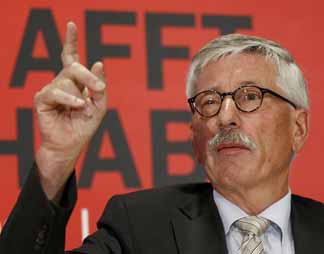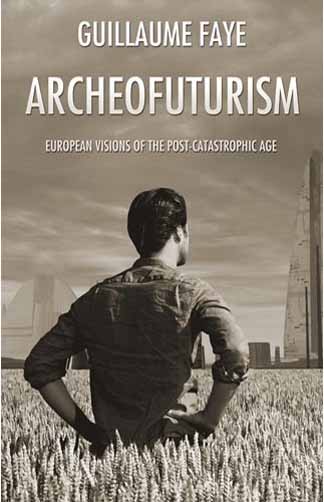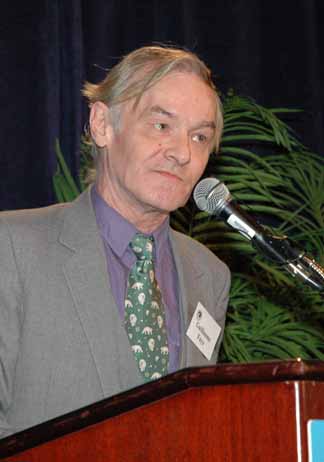I quattro pilastri dell'anno sono i solstizi e gli equinozi. Essi formano la grande croce dell'anno o zodiacale, la cui braccia delimitano le stagioni. In scala ridotta corrispondono al giorno ed alle quattro fasi solari. Le quattro braccia dividono il cerchio zodiacale in quattro gruppi di segni, tre per ciascuno, che danno le caratteristiche delle rispettive stagioni. Ogni data segna l'inizio di un nuovo periodo, diverso dal precedente, in cui la luce del sole assume diversa forma e significato. Le quattro fasi si succedono regolarmente e tutto assume il senso di una rotazione costante attorno a un centro che fa da perno a tutto il movimento. Le quattro fasi dell'anno corrispondono ai quattro elementi ed il sole alla luce che li comprende e li trasfigura. Ogni periodo ha un riflesso esterno e uno interno, creando il presupposto di una stagione interiore che è nostro compito analizzare.
Il primo pilastro è il Solstizio d'inverno, data significativa in ogni tradizione, che segna astronomicamente l'inizio dell'inverno. Corrisponde alla posizione del Sole nel punto più basso dell'orizzonte ed alla maggiore disuguaglianza tra giorno e notte: qui la notte è più lunga del giorno. Il 22 dicembre segna la data ufficiale del calendario "astronomico" dell'anno.1 Da questo momento prende inizio la serie ascendente che porterà in avanti il giorno fino al futuro solstizio estivo, in cui i rapporti si invertiranno. Astrologicamente questa data segna il passaggio del Sole nel Capricorno (segno di Terra), a cui seguiranno l'Acquario e i Pesci. Nel simbolismo del giorno corrisponde invece al punto in cui il sole tocca il culmine della sua discesa: la Mezzanotte, in cui è opposto allo zenith meridiano.
Nell'antico Egitto, veniva simbolizzato nella forma di Khephra, lo scarabeo, chiara immagine dei sole occulto e sotterraneo.
Esotericamente2 questo momento è uno dei più importanti e significativi. Segna il punto preciso in cui l'esterno tace nel freddo e nel silenzio e l'interno vive di luce propria. II sole della coscienza è ora rivolto all'interno di sé e nella mezzanotte dell'anima tutto è pronto per una nuova rilevazione. E' in questo istante senza tempo che venivano eseguite le antiche cerimonie di iniziazione ai misteri dell'lo, nel profondo di grotte e caverne, a Mezzanotte in punto. Tramite esse una luce virtuale, occulta, veniva accesa nell'animo dell'adepto, che ora attendeva la nascita del proprio seme. E' in Inverno infatti che il seme, giacendo sotto la neve ed il gelo, dorme e matura i suoi frutti futuri. Ritualmente il nuovo periodo è rivolto alle opere della Terra: alla creazione cioè di basi e realtà concrete che facciano da perno ad ogni futura attività e alla coagulazione di precedenti iniziative. I tre segni invernali del Capricorno, dell'Acquario e dei Pesci suggeriscono un clima di freddezza, di silenzio e umidità che deve essere sciolto prima che il calore del sole porti con sé la Primavera.
Questo avviene il 21 marzo, il secondo pilastro annuale, data dell'Equinozio di Primavera o ascendente, in cui ciò che era sepolto torna adesso alla luce. Nel simbolismo segna il punto in cui il giorno eguaglia la notte: da questo momento essa sarà sempre più breve del giorno. Il sole della Mezzanotte precedente è ora sorto sull'orizzonte e il giorno è in equilibrio con la notte: è il Ra egizio, il sole occulto che ora diventa visibile. Nel piano zodiacale il Sole passa in Ariete (segno di Fuoco), a cui seguiranno il Toro ed i Gemelli.
II significato esoterico della Primavera è tutto nella luce che ora sorge. L'occulto si fa manifesto, la Terra si apre sotto la spinta del Fuoco e dà inizio alla vita. La luce interiore diventa ora visibile anche all'esterno, che si anima di vita propria. Il seme nascosto sorge dalla terra e tutta la natura si ricopre di verde e di fiori. La luce interiore si proietta all'esterno e dà vita al mondo,che ora viene vissuto come dotato di una propria interiorità. La natura già morta è ora animata da misteriosi significati che divengono chiaramente visibili alla coscienza. E' in questo periodo che venivano eseguiti dei riti di apertura cosmica verso il Creato, con lo scopo di ridurre quello che prima era separato dall'Essere, ma che ora tendeva a fondersi con lui. Sacre orgie e riti di fertilità avevano questo scopo, perché anche il sesso è spirituale.
Lo scopo era quello di riconoscersi nell'universo esterno, considerato come divino: Questo sei tu, secondo l'antica saggezza orientale. L'esterno e l'interno sono due facce di un'identica realtà, che li sovrasta. Ritualmente questo è il periodo del Fuoco, in cui si dà il via a iniziative di ogni genere, dato che anche la creatività personale è stimolata da questa fiamma che ora arde visibile. Si è spinti in ogni caso ad agire, a muoversi, a crescere, a fiorire, in un continuo avvicendarsi di impulsi, idee e sensazioni. E' noto come la Primavera influenzi l'eros animale e umano svegliando e moltiplicando i desideri. Meno noto è come esso, invece, vada al di là della semplice pulsione istintuale. II sesso è la Vita stessa e nell'adepto ai misteri della Luce esso si manifesta in altre forme ignote all'uomo comune. Il sesso cioè si svincola dal tendere al basso e sale, portato dalla fiamma che sorge, verso l'alto investendo idee, volontà e sentimenti di una nuova luce e fecondità. L'adepto cioè è fecondo in alto anziché in basso e il sesso diventa una via per la propria liberazione dai legami umani. La fiamma che sale, alimentata dall'Aria (i Gemelli) e sostenuta dalla Terra (il Toro), si innalza fino allo zenith dando inizio all'Estate.
Questa inizia il 22 giugno, giorno del Solstizio d'Estate e terzo pilastro annuale. Qui il giorno è più lungo della notte e l'anno e la luce sono al culmine. E' una data trionfale che segna la vittoria della luce sull'oscurità e il pieno sole meridiano. Corrisponde infatti all'ora del Mezzogiorno, in cui il sole è allo zenith e irradia al massimo luce e calore. Nel simbolismo egizio è Hathoor, il dio della luce meridiana e pienamente manifesta opposta a quella del Sole di Mezzanotte. Nella volta celeste il sole occupa ora il punto più alto e i suoi raggi arrivano perpendicolari alla luce terrestre. L'arco di luce è massimo e ricaccia la notte nella sua dimora oscura: ora tutto è in pieno sole e chiede di essere completamente manifestato. Astronomicamente il Sole entra nel Cancro (segno dell'Acqua), seguito dal Leone e dalla Vergine. Esotericamente questo periodo segna il momento in cui esterno e interno, Essere e Natura, sono perfettamente uniti e armonizzati, esaltati fino al massimo grado. L'Estate è il trionfo del sesso, della vita e delle opere intraprese. E' il periodo in cui il grano imbiondisce e viene mietuto, in cui sotto l'ardore del sole assume una tinta aurea, segno di perfezione e completamento. L'Estate porta con sé una corona d'oro, che l'adepto assume come segno di Vittoria sulla propria natura inferiore. E' il periodo in cui la materia è al Rosso e in cui i frutti attendono di essere colti dalla sua mano. Negli antichi riti questo periodo era una testimonianza di vittoria forse formava il supporto adatto di ogni cerimonia di incoronazione. Ritualmente l'Estate è il periodo dell'Acqua, in cui si procede a diffondere nel mondo quanto si è percepito e compreso in Primavera. Ora ogni cosa deve prendere corpo in attività che coinvolgano il mondo esterno e lo portino in sintonia con quanto vibra all'interno. Simile in questo all'acqua che si dilata e tende a unirsi con quanto lo circonda, comprendendo tutto in sé. Questo riflette l'antica idea dell'Unità e dell'inesistenza di ogni altro fuori di sé. La realtà esterna è illusione appunto perché si è incapaci di viverla come facente parte di sé stessi. Nell'assunzione positiva del mondo il senso del corpo si dilata e viene a comprendere nel suo ambito tutta la natura esterna e gli esseri che la popolano. Al limite la coscienza individuale si amplia fino a dissolversi in uno stato di coscienza cosmica che rappresenta la perfezione dell'Opera. E il Fuoco del Sole allo zenith provvede a fornirgli un aspetto attivo.
Facendo seguito al periodo estivo, l'Autunno avanza come un lento ripensamento. La fiamma della passione si riduce dando luogo ad un periodo di intensa riflessione, in cui il mondo esterno è filtrato attraverso lo schermo dei propri pensieri e si giudica quanto si è fatto. E' il 23 settembre, data dell'Equinozio d'Autunno o discendente e quarto pilastro dell'anno. La notte è ora di nuovo uguale al giorno, ma in forma diversa che in Primavera. La vita ora si ritira lentamente in se stessa e medita sul passato. Astrologicamente il Sole entra nella Bilancia (segno d'Aria), seguita dallo Scorpione e dal Sagittario. Nel giorno corrisponde all'ora del Tramonto, l'egizio Tum, in cui la luce si bilancia con l'oscurità e tende lentamente verso la morte. E' un'ora malinconica in cui i fantasmi passati risorgono e antiche e nuove idee affollano la mente, in cui si fa il bilancio sul proprio passato immediato e se ne tirano le somme. E' il periodo in cui si raccolgono i frutti e si semina il grano che nascerà nel nuovo anno. Esotericamente la luce dell'Essere si ritrae dall'esterno e tende a coagularsi nella propria origine spirituale, dando l'impressione come di una lenta morte che prende la natura interna ed esterna. E' in questo periodo che venivano praticati riti di astinenza e di purificazione, per liberarsi di tutto e iniziare il nuovo anno rinnovati interiormente. Di solito il periodo di astinenza precedeva immediatamente la data del Solstizio d'Inverno. La sera che va verso la notte è un'ora di purificazione in cui più forte deve splendere il Sole interno, ora non più oscurato dalla luce del giorno, e il crepuscolo fa da silenzioso ingresso. Ritualmente questo è il periodo dell'Aria: intelligenza e comprensione per quanto si è fatto e quanto si farà. La luce ora splende limpida nella propria mente e permette un giudizio obiettivo sui propri fatti e misfatti. Si può anche sorridere di sé, con paziente tolleranza, ma tutto ormai è dietro se stessi e va lasciato da parte.
E così torniamo verso l'inverno. Il cerchio zodiacale ha compiuto un nuovo giro e si appresta ad accendere i fuochi di quello che sarà l'inizio di un nuovo anno.
Nemo.
NOTE
1: I Solstizi, come gli Equinozi, corrispondono ad un particolare evento astronomico. Per convenzione si situano in alcuni giorni specifici sul calendario. amerò, a causa delle sei ore di scarto tra un anno e l'altro (la giurata di un anno è di 365 giorni e sei ore), si determina ogni quattro anni il giorno 29 di febbraio (anno bisestìle); di conseguenza la data in cui cadono i Solstizi e gli Equinozi non è sempre la stessa
ed in ogni caso l'orario differirà comunque dall'anno precedente.
2: Per esoterico, si intende l'insegnamento a una "conoscenza" (esoterica) che, per la sua particolare Natura e Forza, non è data alla portata di tutti. L'insegnamento tradizionale, dottrinario, che viene rivolto indistintamente, rispetto alla qualificazione del singolo, è chiamato essoterico;
l'insegnamento, che si rivolge a persone più qualificate ed in grado di essere sensibili e recettive verso alcuni messaggi, si dice esoterico. Vi è oltremodo da sottolineare che l'insegnamento esoterico non può essere compreso da colui che non ha già in sé le condizioni per il suo apprendimento.


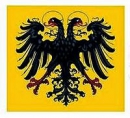


 del.icio.us
del.icio.us
 Digg
Digg



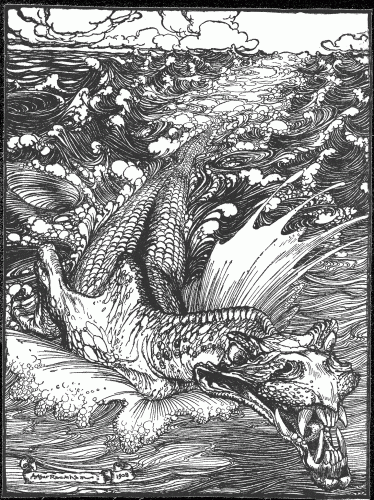
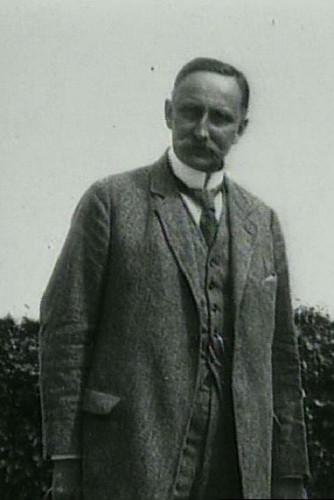
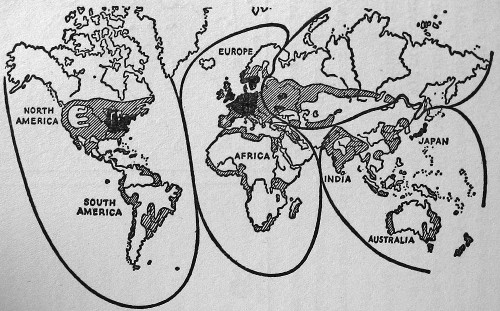
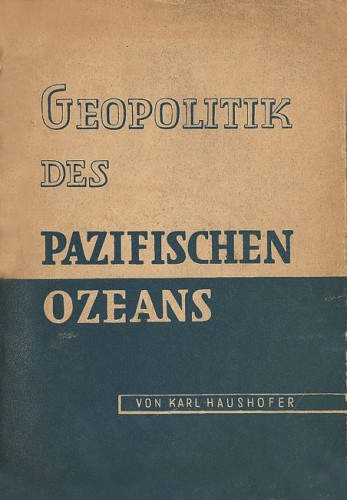 Haushofer’s radically continentalist and anti-thalassocratic thought came into focus in 1941, when he published Der Kontinentalblock-Mitteleuropa-Eurasien-Japan (The Continental Bloc Central Europe-Eurasia-Japan). Written after the Germano-Soviet pact, this work argued for a Germano-Italo-Soviet-Japanese alliance that would radically reorganize the Eurasian continental mass. He stressed that the permanent fear of the Anglo-Saxons is the emergence of a Berlin-Moscow-Tokyo axis, which would completely escape the influence of the commercial thalassocracies, which, he writes, practice the policy of the anaconda, which consists in gradually encircling and slowly suffocating its prey. But a unified Eurasia would be too large for the Anglo-American anaconda. Thanks to its gigantic mass, it could resist any blockade.
Haushofer’s radically continentalist and anti-thalassocratic thought came into focus in 1941, when he published Der Kontinentalblock-Mitteleuropa-Eurasien-Japan (The Continental Bloc Central Europe-Eurasia-Japan). Written after the Germano-Soviet pact, this work argued for a Germano-Italo-Soviet-Japanese alliance that would radically reorganize the Eurasian continental mass. He stressed that the permanent fear of the Anglo-Saxons is the emergence of a Berlin-Moscow-Tokyo axis, which would completely escape the influence of the commercial thalassocracies, which, he writes, practice the policy of the anaconda, which consists in gradually encircling and slowly suffocating its prey. But a unified Eurasia would be too large for the Anglo-American anaconda. Thanks to its gigantic mass, it could resist any blockade.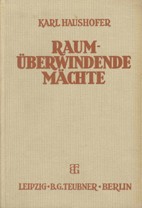 The idea of a tripartite alliance first occurred to the Japanese and Russians. At the time of the Russo-Japanese War of 1905, when the British and Japanese united against the Russians, some of the Japanese leadership—including Hayashi, their ambassador in London, Count Gato, Prince Ito, and Prime Minister Katsura—desired a Germano-Russo-Japanese pact against the English seizure of global sea traffic. The visionary Count Gato recommended a troika in which the central horse, the strongest one, flanked by two lighter and more nervous horses, Germany and Japan. In Russia, the Eurasian idea would be incarnated a few years later by the minister Sergei Witte, the creative genius of the Trans-Siberian Railroad who in 1915 advocated a separate peace with the Kaiser.
The idea of a tripartite alliance first occurred to the Japanese and Russians. At the time of the Russo-Japanese War of 1905, when the British and Japanese united against the Russians, some of the Japanese leadership—including Hayashi, their ambassador in London, Count Gato, Prince Ito, and Prime Minister Katsura—desired a Germano-Russo-Japanese pact against the English seizure of global sea traffic. The visionary Count Gato recommended a troika in which the central horse, the strongest one, flanked by two lighter and more nervous horses, Germany and Japan. In Russia, the Eurasian idea would be incarnated a few years later by the minister Sergei Witte, the creative genius of the Trans-Siberian Railroad who in 1915 advocated a separate peace with the Kaiser.


